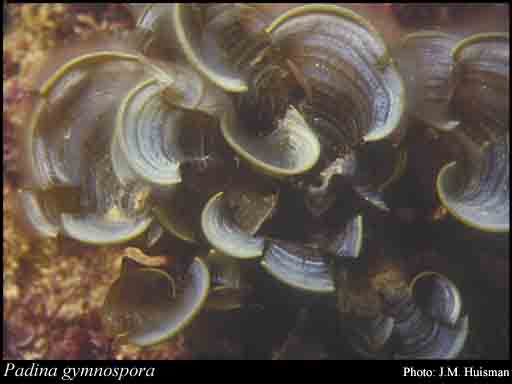- Reference
- Abh.Naturwiss.Naturwiss.Verein Hamburg 5(2):47 (1871)
- Conservation Code
- Not threatened
- Naturalised Status
- Native to Western Australia
- Name Status
- Current

Scientific Description
Habit and structure. Thallus medium brown above to dark brown below, relatively robust, often lightly calcified on the upper surface, 5–15 cm long and 5–20 cm in spread, when young flabellate and becoming shallowly to deeply divided with cuneate to flabellate segments mostly 1–5 cm broad above, with acute to rounded axils, attached by a rhizoidal holdfast 0.5–2 cm long and 0.2–1 cm across; epilithic. Structure of four layers of cells, 100–150 µm thick, near the apices, becoming 6–8(–9) cells and 200–250 µm thick in lower parts with similar sized cells throughout in transverse section. Cells in surface view 25–30 µm broad, L/B 1–1.5(–2). Hairs in concentric lines, 3–6 mm apart, on both sides of the thallus, more conspicuous on the lower side, 25–35 µm in diameter.
Reproduction. Sporangia in concentric lines, or more or less in rows of sori, between each hair line, indusium absent or slight, on both surfaces but mainly on the upper; sporangia ovoid but broad-based, 25–35 µm long and 10–15 µm in diameter. Sexual plants unknown on Australian coasts.
Distribution. Widespread in warmer seas. In W. Aust., south to Augusta.
[After Womersley, Mar. Benthic Fl. Southern Australia II: 217 (1987)]
Distribution
- IBRA Regions
- Swan Coastal Plain, Warren.
- IBRA Subregions
- Perth, Warren.
- IMCRA Regions
- Central West Coast, Leeuwin-Naturaliste, Pilbara (offshore).
- Local Government Areas (LGAs)
- Ashburton, Augusta Margaret River, Cockburn, Irwin, Joondalup, Rockingham.